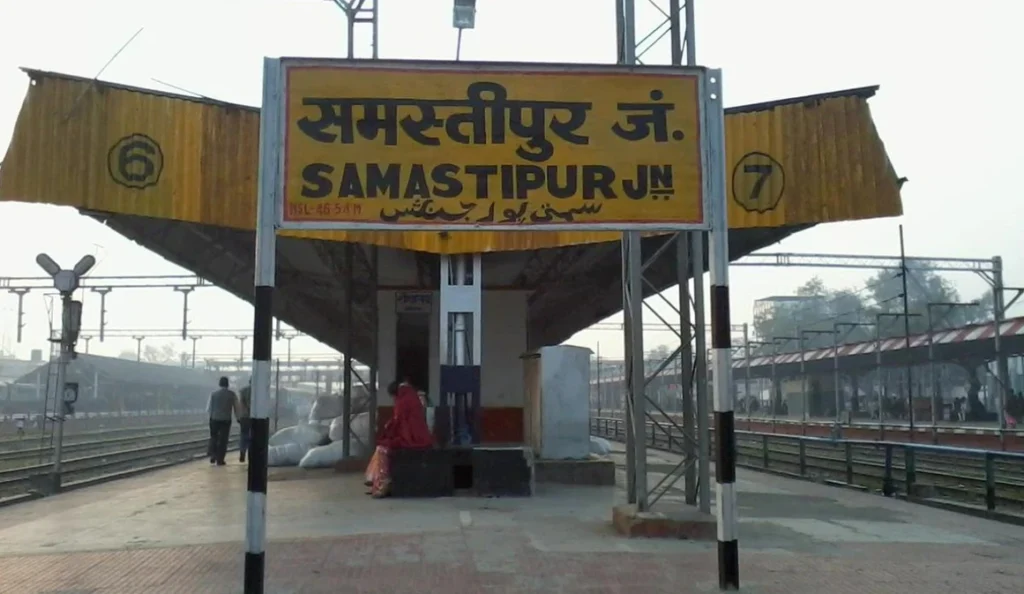Explore Samastipur District Bihar known for its rich heritage cultural vibrancy and economic growth Discover its historical legacy traditions and progress.

Samastipur District Legacy Development and Cultural Brilliance
Samastipur, situated in the northern part of the Indian state of Bihar, is a district brimming with history, culture, and a promising future. Covering an area of approximately 2,904 square kilometers, this district is a microcosm of India’s diversity, offering a blend of rural charm and urban development.
Historical Significance:
Samastipur has a deep-rooted historical significance. It was once part of the ancient kingdom of Mithila and finds mentions in the Hindu epic, Ramayana. The region has been witness to the rise and fall of empires, from the Mauryas to the Guptas, each leaving their mark on the land. Today, one can explore remnants of these bygone eras, including ancient temples, ruins, and historical sites scattered throughout the district.
Cultural Heritage:
The cultural tapestry of Samastipurr is woven with colorful threads of tradition. The district boasts a rich tradition of folk music and dance. The Madhushravani Mahotsav, a local festival, showcases the vibrant folk culture of the region with performances of Maithili songs and dances. The district is also known for its intricate Madhubani paintings, a style of art that has gained international acclaim.
Agriculture and Economy:
Agriculture plays a pivotal role in Samastipur’s economy, with the fertile Gangetic plains offering a conducive environment for farming. The district is a major producer of rice, maize, wheat, and sugarcane. The Agro-based industries, including sugar mills and rice mills, have significantly contributed to the local economy. In recent years, Samastipur has also seen a surge in small-scale industries and trade, further boosting its economic growth.
Education and Healthcare:
The district has made remarkable strides in education and healthcare. It is home to several educational institutions, including Samastipur College, which has been imparting quality education for decades. Moreover, Samastipur boasts numerous healthcare facilities, including government and private hospitals, ensuring the well-being of its residents.
Connectivity and Infrastructure:
Connectivity has improved substantially in Samastipur in recent years. The district is well-connected to major cities in Bihar and neighboring states through an extensive road network. The National Highway 28 passes through the district, enhancing its connectivity to other parts of the country. The railway network also plays a crucial role, with Samastipur Junction being one of the busiest railway stations in the region.
Challenges and Opportunities:
While Samastipur has witnessed progress in various sectors, it faces its fair share of challenges. Infrastructure development, including road maintenance and flood control measures, remains a priority. Moreover, the district grapples with issues related to healthcare accessibility and quality education, particularly in rural areas.
However, these challenges are accompanied by a multitude of opportunities. Samastipur’s strategic location, agricultural potential, and improving infrastructure make it an attractive destination for investment. The government’s focus on rural development and employment generation schemes is paving the way for a brighter future.
Famous Places in Samastipur District
Samastipur District in Bihar is a land of historical and cultural significance, boasting several famous places that offer a glimpse into its rich heritage. Here are some of the notable attractions in the district:
1. Shree Ram Temple (Suta Mahadeva Temple):
This ancient temple is dedicated to Lord Shiva and is believed to date back to the time of the Ramayana. It holds immense religious importance and attracts devotees from far and wide.
2. Chhinnamasta Mandir (Mahishi):
Located in Mahishi, this temple is dedicated to Goddess Chhinnamasta, one of the ten forms of Goddess Durga. The temple’s unique idol of the goddess beheaded and standing on her own severed neck is a rare sight.
3. Hasanpur Ganga Sagar:
Hasanpur Ganga Sagar is a scenic spot on the banks of the River Ganges. It’s a popular destination for both religious rituals and picnics. The calm and serene ambiance of this place is truly refreshing.
4. Ugratara Sthan (Sarairanjan):
This temple dedicated to Goddess Ugratara is an important religious site in Sarairanjan. The architecture and spiritual atmosphere make it a must-visit for devotees and tourists alike.
5. Bapu Dham (Vidyapati Nagar):
Bapu Dham is a religious complex in Vidyapati Nagar, named after the renowned Maithili poet Vidyapati. It houses a temple and various facilities for pilgrims and visitors.
6. Madhubani Paintings:
While not a single place, Madhubani, a town in Samastipur District, is famous for its Madhubani paintings. These intricate and colorful artworks depict traditional stories and themes and can be found in various homes and art centers across the district.
7. Samastipur College:
Samastipur College is one of the oldest educational institutions in the district. Its colonial-era architecture and lush campus make it an interesting place to visit, and it has played a significant role in the education of the local population.
8. Samastipur Junction:
Samastipur Junction is one of the busiest railway stations in Bihar. While not a tourist attraction in itself, it serves as a gateway to the district and is a bustling hub for travelers.
9. Kali Temple (Bithan):
This temple dedicated to Goddess Kali is a popular religious site in Bithan. It attracts devotees during religious festivals and offers a serene environment for spiritual contemplation.
10. Gurdwara Sahib (Samastipur Town):
This Sikh place of worship is an important religious site for the Sikh community in the district. It reflects the cultural diversity of Samastipur.
These famous places in Samastipur District offer a mix of spirituality, history, and culture. Visitors can explore the district’s rich heritage and soak in the religious fervor while enjoying the natural beauty of the region.
Read More :-
